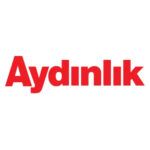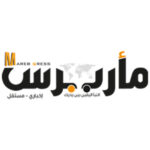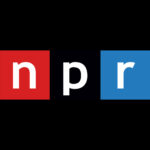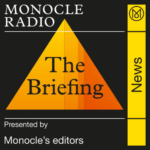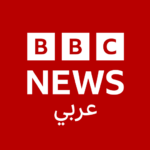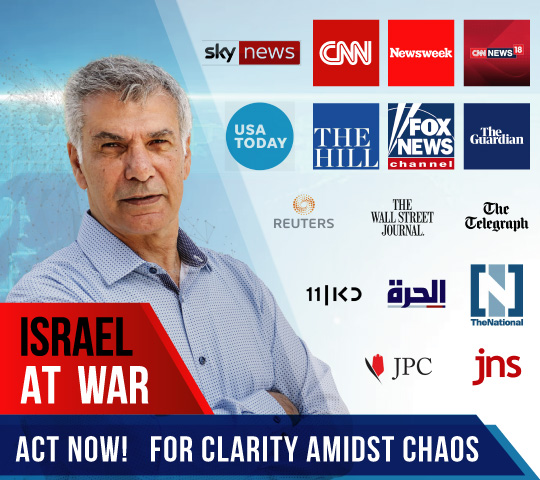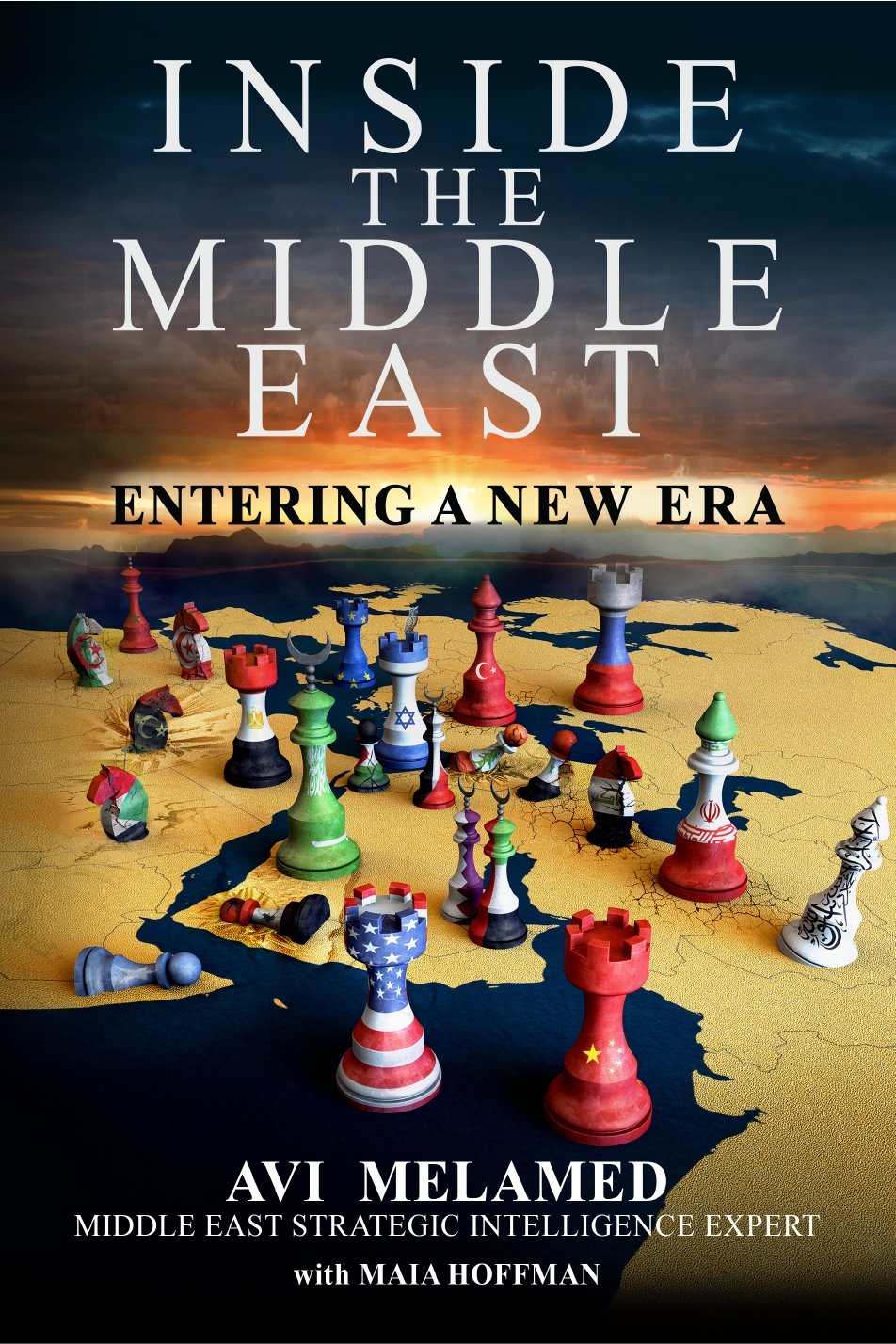|
Getting your Trinity Audio player ready...
|
Zoom-In on the Middle East | December 15, 2019
The Middle East is a chain of links. Everything is connected. Understanding the links is critical to developing an accurate picture of reality. I wanted to take the opportunity to provide a contextualized snapshot of the region along with my predictions of what we can expect in the short term. I hope you find this brief overview helpful.
Lebanon
Since mid-November, there have been continuing protests in Lebanon. Around the clock, hundreds of thousands of people are protesting the corruption, the country’s increasingly imploding economy, the lack of basic services (education, security, employment, infrastructure, etc.). The Lebanese people are demanding profound and substantial changes and will not settle for cosmetic repairs and political games that make no substantial and profound change.
One of the unique characteristics of the protests is the fact that it includes all Lebanese – Shi’ites, Sunnis, Druze, Christians, etc. Another unique aspect is the fact that the protests have mostly been peaceful. Until now, only one person has been killed (although dozens have been injured).
There is another facet that is just as – if not more important than the demand for services and government accountability. And that is the fact that people are demanding that the Lebanese government stop allowing Iran to control Lebanon’s domestic and foreign policy. The essence of this demand is that the Lebanese people are fighting for their identity and their State. One of the major refrains of the protests is that “We are Lebanese” and we want to restructure the Lebanese political system and replace it with one that does not favor one ethnic group over another.
Iran’s proxy, Hezbollah and the Iranian-affiliated Lebanese Shi’ite Party, Amal and their supporters are not happy with this display of Lebanese nationalism because they have been able to manipulate the current system to increase their power and Iran’s hold over Lebanon. They, therefore, strive to quell the protests using restrained violence. However, the protests continue.
Meanwhile, as the protests continue to escalate, the Lebanese economy is further imploding. Lebanese currency has lost a third of its value and the dollar reserves of Lebanon are dwindling.
In light of the protests, Lebanese Prime Minister Saad al Hariri resigned at the end of October. So far, all attempts to form a new government have failed, leaving Lebanon paralyzed with no government.
◊ My Short-Term Prediction: The increasing friction between Amal and Hezbollah’s supporters on the one hand, and the Lebanese demanding reform, on the other hand, has the potential to lead to wide-scale violence. However, at this stage, the probability of that is low. Primarily because the Lebanese army has demonstrated thus far that it can contain friction between the two camps without using excessive force. And all political factors in Lebanon know that wide-scale violence will drag the already half sinking ship called Lebanon into the abyss.
Iraq
Since the beginning of October there have been widespread demonstrations and riots in Iraq. The epicenter of the protests has been areas in the south that are largely populated by Shi’ites, including major cities like Baghdad, Basra, Najaf, and Karbala.
Like in Lebanon, the uprising in Iraq centers around corruption, the country’s shattered economy, lack of services, and the people’s demand to end Iran’s control of Iraq’s domestic and foreign policy.
Different from Lebanon, the protests in Iraq are violent and bloody. Iranian-supported Iraqi militias are targeting protesters – killing them in cold blood and executing people in the streets. These militias have thus far killed hundreds and injured tens of thousands. Meanwhile, the Iraqi government and the Iraqi army sit on the sidelines and do nothing to protect the civilian protesters.
Iran views Iraq as its protectorate and is determined to maintain and secure its control over Iraq. That is why Iran is determined to crush the uprising in Iraq.
However, the growing death toll of Iraqi protesters – the majority of whom are Shi’ites, further fuels the flames of the uprising. As the number of casualties continues to rise, the powerful and massively armed Shi’ite tribes in southern Iraq have made it clear that they will not tolerate the continued slaughter of the protesters. Furthermore, the more protesters are killed, the Iraqi National Army – who has so far stood on the sidelines – may step in to protect the protesters which would bring them into direct conflict with Iraqi Iranian- backed militias.
In light of the protests, Prime Minister, Abd El Mahdi resigned at the end of November, which according to the Iraqi Constitution, automatically triggered the entire government to resign and to act as a transitional government.
◊ My Short-Term Prediction: It is very possible that the violent protests in Iraq will lead to more widespread violence, and perhaps even to a direct confrontation between the army and the Iranian-backed militias. It is likely the situation in Iraq will further deteriorate including increased attacks on US installations in Iraq.
Iran
In the middle of November 2019 a wave of public demonstrations spread throughout almost all of Iran’s cities. Protesters attacked and burned government facilities, banks, gas stations, police stations, and blocked roads. The regime has fiercely suppressed these protests. Hundreds (and according to reports by the Iranian opposition, more than 1,000) protesters have been killed, thousands have been wounded, and thousands have been arrested.
Similar to Lebanon and Iraq, the backdrop to the protests is Iran’s crumbling economy, growing inflation, high unemployment, and rampant and systemic corruption. Also, dialoguing with Lebanon and Iraq, the Iranian people are demanding that the funds the regime allocates to arm and finance their agents, proxies, and militias in the Middle East be used instead at home to meet the needs of the Iranian people. The young generation demands to be released from the iron grip of the oppressive Mullah regime.
The regime was able to crush the recent uprising in Iran in about ten days. Some observers note two unprecedented aspects of the recent demonstrations in Iran. One, the fact that Iranian protesters attacked government facilities and confronted the regime’s oppressive elite Basij forces barehanded, indicates that the barrier of fear has been breached. Two, the demonstrations were widespread and included 90% of Iran’s cities.
◊ My Short-Term Prediction: The Mullah regime will survive these protests. However, the spiraling economic, hand in hand with public outrage towards the Mullah regime, means the fire is there and it is spreading. The resumption of riots and protests is thus a very likely scenario.
The Arab Gulf Monarchies
The Gulf Cooperation Council (GCC) concluded its 40th conference in Saudi Arabia on December 10th. The Conference focused on the need to strengthen the military cooperation between GCC members in order to protect the Gulf and their individual sovereignty. The concluding statement also called upon the international community to defend and secure shipping in the region. The backdrop for the statement is the growing Iranian threat against Saudi Arabia and shipping in the Gulf waters. That concern is not unfounded. Iran attacked ships in UAE territorial waters on May 13 and June 13, 2019, and on September 14, 2019, Iran launched a cruise missile attack on Saudi Arabian Aramco oil company facilities.
An interesting aspect of the GCC meeting was the fact that the Prime Minister of Qatar, Abdullah bin Nasser bin Khalifa Al Thani attended the conference. Since 2017, there has been a deep rift in the relationship between the major GCC countries (including Egypt which holds GCC Observer Status) on the one hand and Qatar on the other. The background to the crisis is the GCC’s displeasure with some elements of Qatar’s regional policy, like its support of the Muslim Brotherhood, its relationship with Turkey, and its tendency to side with Iran. To show its consternation, the Gulf States imposed an air and land embargo on Qatar and froze diplomatic and economic relations.
The fact that Qatar’s Prime Minister attended the GCC Conference, together with reports of secret phone conversations between Saudi Arabia and Qatar, and the participation of soccer teams from the Gulf participating in a recent Tournament in Qatar (after initially announcing that they will not participate in the tournament) may indicate that a rapprochement is underway.
◊ My Short-Term Prediction: Further rapprochement between Qatar and the Gulf States is likely to take place and a full reconciliation is likely.
Turkey and the Civil War in Libya
Following the ousting of Libyan Dictator, Muammar al-Gaddafi in October 2011, Libya has experienced constant, growing violence and unrest as various Libyan factors are fighting for power and control.
The civil war in Libya has also become a platform for a regional power struggle. On one side there is The National Libyan Army (NLA) led by General Khalifa Haftar who is supported by Egypt, Saudi Arabia, and the UAE. On the other side is the Libyan Government of National Accord, led by Prime Minister Fayez al-Sarraj, which is armed and militarily supported by Turkey, and financially supported by Qatar.
There are two recent developments of note in the context of Turkey and the war in Libya:
First, in November 2019, an agreement was signed between Turkey and the Libyan Government of National Accord, marking the maritime borders between Turkey and Libya and providing Turkey a naval base in Libya. The agreement – though not yet approved by Libyan Parliament, furthers one of Turkey’s most important goals – control over the natural gas in the Eastern Mediterranean. The huge gas fields in the Eastern basin of the Mediterranean Sea fuel a regional power struggle that shapes alliances and counter alliances. Turkey is concerned with the Israel-Egypt-Cyprus-Greek alliance and therefore wants to establish a counter-alliance to ensure it has access to the reserves. Erdogan uses a wide array of tactics to demonstrate its determination to ensure its control over the gas. Turkey recently began drilling near Cyprus, ignoring the demands of the Cyprus government and the EU to stop drilling. Reportedly, the Turkish Navy forced an Israeli gas research ship to leave the area of Cyprus. Turkey also seeks regional allies to secure its interests. And in that context, Libya is an area of interest for Turkey.
The second thing to pay attention to is General Haftar’s recent announcement that “a decisive attack of NLA on Tripoli is expected to take place soon.” Following that announcement, Turkish President Recep Tayyip Erdoğan announced that Tukey would send military forces to Libya should the Libyan government ask. That offer was politely rejected by the Libyan government.
◊ My Short-Term Prediction: The probability of Turkey becoming directly involved in the war in Libya is very unlikely. However, it is likely that Turkey will continue and perhaps increase its provocations and attempts to secure its interest in the Eastern basin of the Mediterranean Sea. The Eastern basin of the Mediterranean is a focal stage to be watched very closely.
Yemen
At the end of November, United States forces seized a ship in the Gulf that was carrying precision missile parts from Iran. Iran was sending the weapons to the Iranian-backed Houthi tribes in Yemen. This transfer violates the 2006 United Nations Resolution 1737 that forbids Iran from exporting arms. In this context, it should be noted that since October 2016 the Houthis have been using long-range missiles and attack drones to attack targets in Yemen and Saudi Arabia. At the end of November, the Houthis used an advanced surface-to-air missile to shoot down a Saudi helicopter The Houthis advanced military weapons systems come from Iran and the Iranian Revolutionary Guards provide the Houthis’ with their military training.
Official Houthi spokesmen are increasingly threatening to attack Israel. The Houthis have a history of attacking ships in the Bab al-Mandab Strait, a naval route that connects Israel with the Indian Ocean. As analysts and officials express growing concern over a possible Iranian military attack in the region, Israel takes the Houthis’ threats seriously.
◊ My Short-Term Prediction: Though the probability of the Houthis directly attacking Israeli territory from Yemen is low, the Houthis attacking an Israeli ship in the Red Sea is a possibility.
Palestinians
Recently reports have resurfaced about attempts to bridge the rift between the Palestinian Authority that controls parts of the West Bank and Hamas who has ruled Gaza since launching a bloody coup against the Palestinian Authority in June 2007. It should be noted that all reconciliation agreements signed thus far to end the Palestinian rift have failed.
◊ My Short-Term Prediction: The probability of a reconciliation between Hamas and the PA is unlikely.
Israel
Israel is preparing for the third round of elections within one year which is scheduled to be held in March 2020. This is an unprecedented event in Israeli politics. It is an outcome of the fact that in the previous two rounds of elections (April and September 2019) the two major political blocs: the right bloc and the center-left bloc do not have the sixty-one seats needed to assemble a government. The third-largest bloc is the Israeli Arab parties.
The two largest blocs endorse Zionism and the definition of Israel as the homeland of the Jewish people. The Israeli Arab bloc rejects the Zionist vision and objects to the definition of Israel as the homeland of the Jewish people.
It is possible to assemble a government with less than 61 seats. That would be called a Minority Government. Such a government would be dependent on the support of other political parties who are not part of the government, and therefore, such a government would be very weak.
◊ My Short-term prediction: It is very likely that the two major blocs will join together form a Unity government (as opposed to a right-wing or left win Coalition or a Minority Government following the March 2020 elections.
General evaluation – Iranian Military Attack:
Israeli and US officials and intelligence agencies estimate that Iran is in the final preparation phase for a military attack, possibly attacking Israel and/or targets in the Gulf region.
The Mullah regime is faced with growing challenges domestically (uprisings in Iran), regionally (the outbreak of mass protests in Lebanon and Iraq), and internationally (the major European Union states are expressing growing discontent with the Mullah regime’s behavior). Those challenges threaten the Mullah’s hegemonic vision of becoming the regional superpower.
As time goes by and its economy crumbles, its ability to continue to influence events in Lebanon and Iraq weakens, and the tolerance of major EU states wanes, the Mullah regime is looking for a bargaining chip it could use to strengthen its negotiating position.
One of the “go-to” strategies of the Iranian Mullah regime uses is setting fires in other arenas to divert attention from its critics and rally the masses around issues that can help the regime achieve its goals. Sometimes the Iranians set the fire themselves, more often they use their proxies and agents – Hamas, the Houthis, Hezbollah, Islamic Jihad in Palestine, Iranian-backed Shi’ite militias in Iraq, Syria, etc.
A move like a substantial attack (“substantial” does not mean necessarily a massive attack, but rather an attack that will demonstrate Iran’s advanced military capabilities and capacity) will express the Iranians willingness to walk on the edge to secure its interests.
Iran has two potential methods of attack:
- A direct Iranian attack
- Attack using Iran’s proxies
In my analysis there are seven potential targets for an Iranian direct / Iran’s proxies attack:
- Saudi oil facilities
- US assets in the region
- Marine traffic in the Gulf / Red Sea
- Israel
- Strategic targets in US/Europe
- Jewish / Israeli targets in US / Europe / Central Asia
- Cyberattack
◊ My Short-Term Prediction: An Iranian direct/indirect military attack is likely. In my evaluation, an Iranian proxy attack is likely. In that case, the preferred methods are:
- Missile attacks on Israel launched from Western Iraq (Iraqi-Syrian border)
- Attacking/sabotaging/seizing an Israeli ship in the Red Sea
- Cyberattack on Israel or Saudi infrastructure
Recommendation for US policy recommendations:
I am frequently asked, in the face of the regional challenges, what should the US Middle East policy be? In October 2019, in an article entitled: Part 3 | Alarms on Lebanese-Israeli Border: Preemptive Actions to Prevent a Wide-Scale War in The Middle East, I published my US policy recommendations. I stand by those recommendations today.
If you want to have a better understanding of the news and what really drives the unfolding events…
Read the latest book of Avi Melamed,
INSIDE THE MIDDLE EAST | ENTERING A NEW ERA, available now >>>
Follow me on Twitter @AviMelamed; Facebook @InsideTheMiddleEast; for more Videos on YouTube https://www.youtube.com/c/AviMelamed
I can always be reached at Av*@********ed.com






